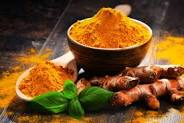Unveiling a Promising Therapeutic Strategy for Alzheimer's through Green Tea and Molecule Research
Introduction:
In a groundbreaking
research study conducted this week, scientists have uncovered a potentially
game-changing therapeutic strategy for Alzheimer's disease. This study not only
delves into the intriguing properties of green tea but also explores the
therapeutic potential of various molecules. Let's dive into the details of this
promising development in the fight against Alzheimer's.
Understanding Alzheimer's:
Alzheimer's disease, a
progressive neurodegenerative condition, remains a pressing global health
concern. Characterized by memory loss, cognitive decline, and behavioral
changes, Alzheimer's has a devastating impact on individuals and their
families. Despite extensive research, a definitive cure or effective treatment
for the disease has remained elusive.
The Green Tea Connection:
The research study that
has generated considerable excitement involves the investigation of green tea
and its potential benefits in combatting Alzheimer's. Green tea, known for its
numerous health benefits, contains a group of compounds called polyphenols,
with one of the most studied being epigallocatechin gallate (EGCG). EGCG has
shown promising antioxidant and anti-inflammatory properties, which are vital
in the context of neurodegenerative diseases like Alzheimer's.
Molecule Exploration:
In addition to green tea,
the research also focused on exploring various molecules with potential
therapeutic value. This aspect of the study aimed to identify compounds that
could target specific mechanisms involved in Alzheimer's pathogenesis.
Scientists screened a diverse range of molecules to assess their ability to
inhibit the formation of toxic amyloid-beta plaques, a hallmark of Alzheimer's.
The Key Findings:
The research yielded
several noteworthy findings:
- Green Tea's Protective Effects:
The study confirmed that EGCG, found in green tea, exhibited
neuroprotective properties. It not only reduced inflammation but also
demonstrated the ability to break down and clear amyloid-beta plaques,
potentially slowing down the progression of Alzheimer's.
- Promising Molecules:
Among the molecules explored, several showed promise in inhibiting
amyloid-beta plaque formation. These findings open up new avenues for drug
development and therapeutic interventions.
- Synergistic Approach:
Researchers discovered that a combination of EGCG and select molecules had
a synergistic effect, significantly enhancing their ability to combat
Alzheimer's pathology.
Implications and Future
Directions:
The results of this
research study provide hope for those affected by Alzheimer's disease. While
there is still much work to be done, the identification of potential
therapeutic compounds and the synergistic effects observed with green tea
compounds represent significant progress in the quest to treat and eventually
cure Alzheimer's.
It's important to note
that this research is in its early stages, and further studies and clinical
trials will be necessary to validate these findings. Nonetheless, the study
serves as a beacon of hope in the battle against Alzheimer's, offering a fresh
perspective on potential treatments.
Conclusion:
In the ongoing quest to
conquer Alzheimer's disease, this week's research study has shone a spotlight
on the therapeutic potential of green tea and various molecules. While the
journey towards a cure is far from over, these findings provide renewed
optimism for those affected by Alzheimer's. As scientists continue to unravel
the complexities of this devastating disease, we remain hopeful that innovative
therapies and solutions are on the horizon, bringing relief to countless
individuals and their families.
























